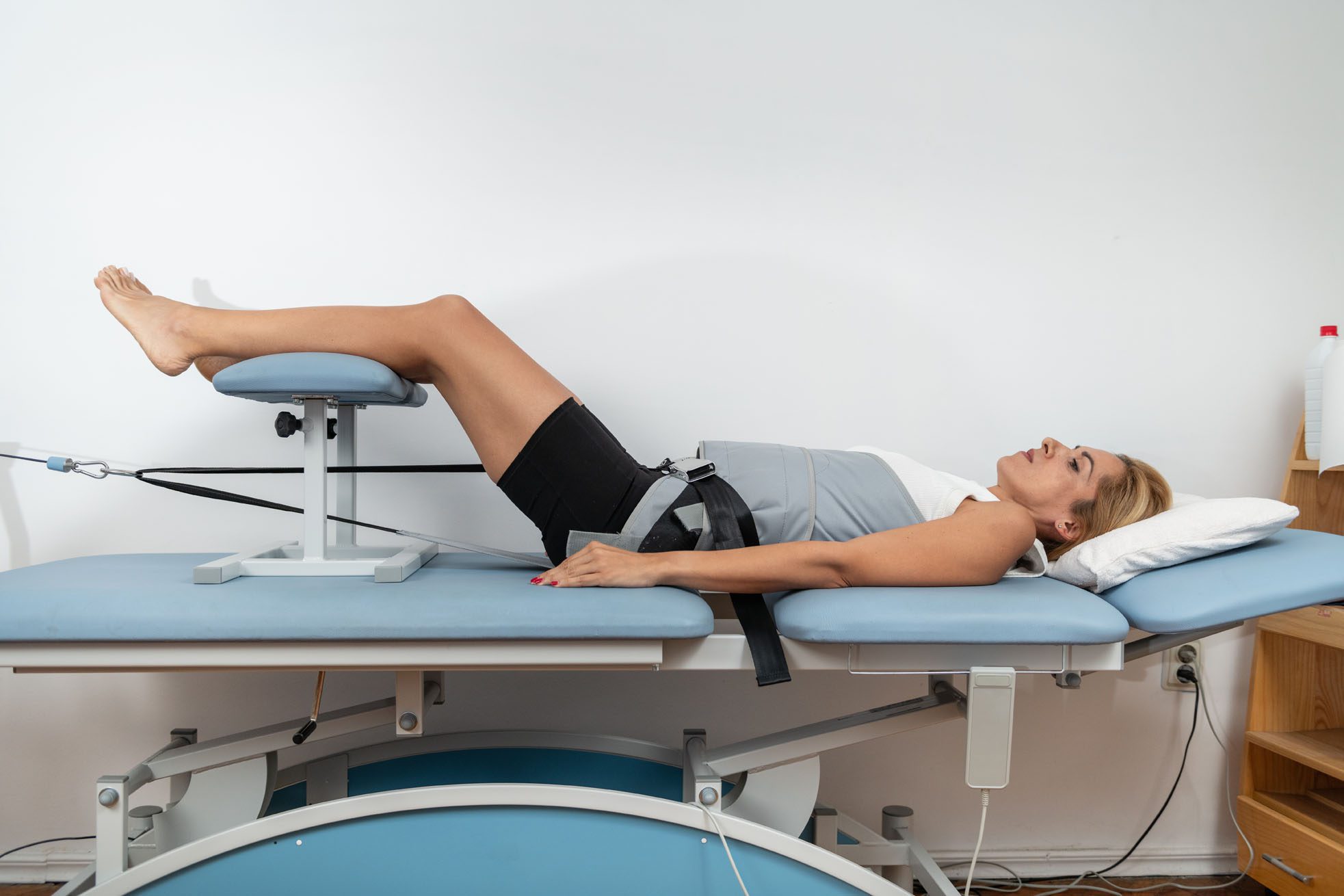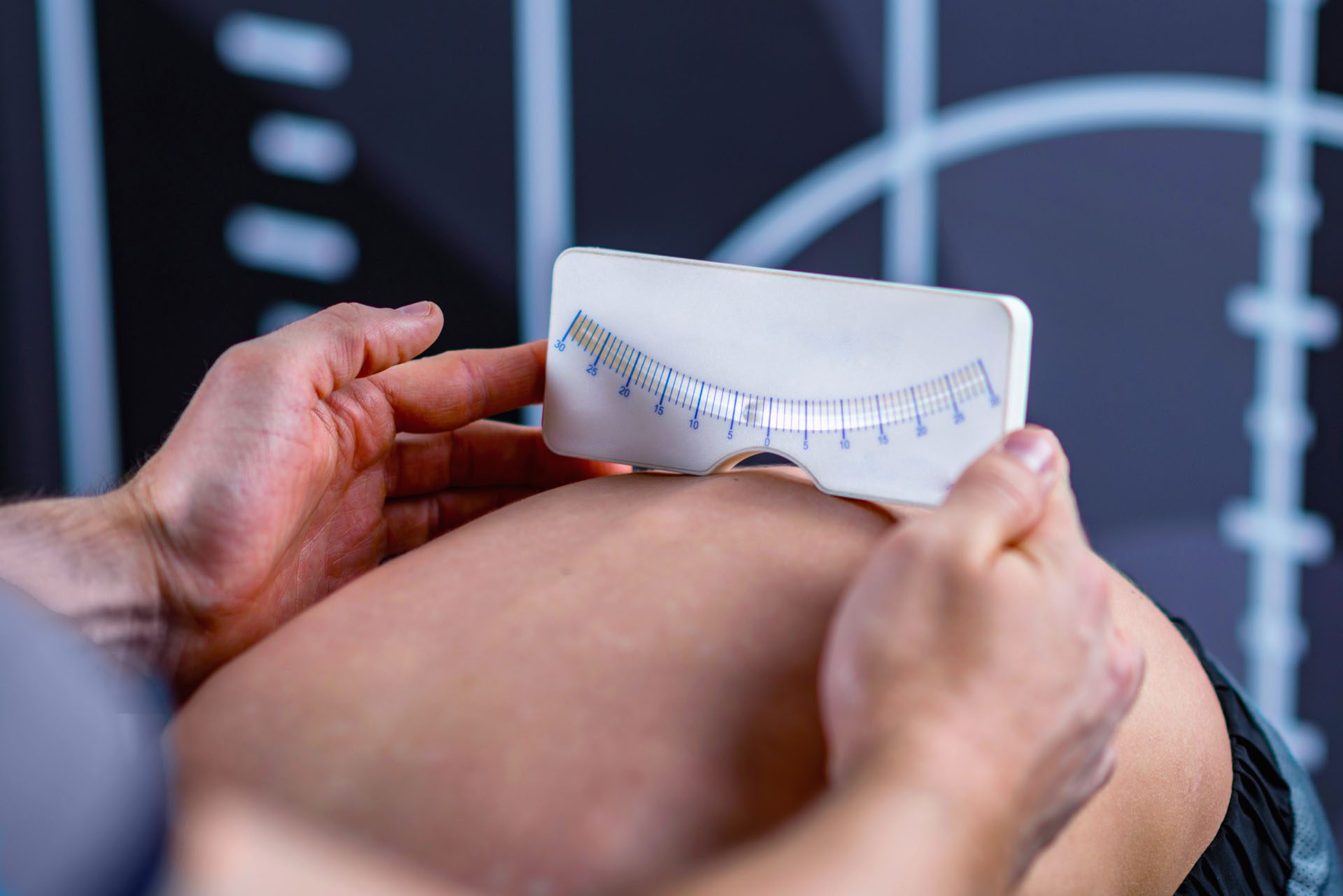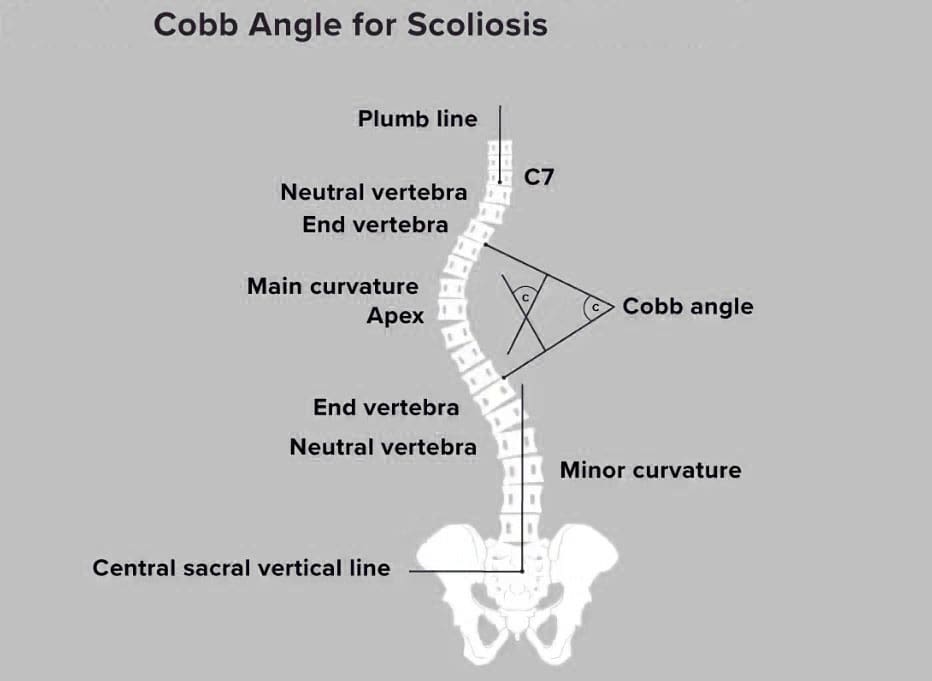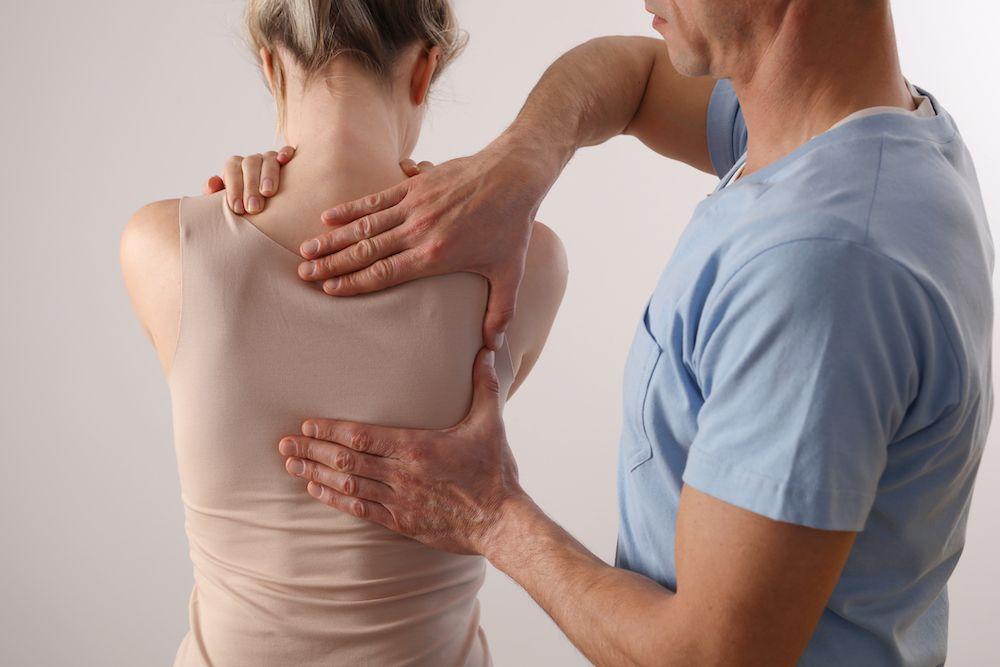Car Crashes and Posture: Understanding Long-Term Effects and Recovery Options
Motor Vehicle Accidents and Posture Recovery
Motor vehicle accidents (MVAs) can have a profound impact on an individual’s health, particularly their posture, mobility, and overall musculoskeletal system. One of the most common injuries resulting from MVAs is whiplash, which involves a sudden jolt to the head and neck, causing strain and damage to soft tissues. This injury often leads to neck pain, stiffness, headaches, and long-term postural issues such as forward head posture. Beyond whiplash, MVAs can cause back pain, nerve damage, indirect trauma, and mobility challenges, all of which contribute to chronic pain and poor alignment. This post examines the impact of motor vehicle accidents (MVAs) on posture, the associated musculoskeletal complications, and the role of chiropractic care, particularly the expertise of Dr. Alexander Jimenez, DC, APRN, FNP-BC, in treating these injuries. We will also discuss the importance of advanced imaging, diagnostic assessments, and legal documentation in personal injury cases, especially in El Paso, Texas.
The Mechanics of Whiplash and Its Impact on Posture
Whiplash is a common injury sustained in MVAs, particularly in rear-end collisions. The sudden acceleration and deceleration of the head cause the neck to whip back and forth, straining muscles, ligaments, and tendons in the cervical spine. According to Healthdirect, whiplash can lead to symptoms such as neck pain, stiffness, and tenderness in the shoulders, which may persist for weeks or even months. These symptoms can disrupt normal posture, as individuals may unconsciously adjust their head and neck position to alleviate discomfort.
One of the most significant postural consequences of whiplash is forward head posture (FHP). FHP occurs when the head is positioned forward relative to the shoulders, placing additional strain on the neck and upper back muscles. Atlas Spine Care notes that whiplash can weaken the muscles supporting the cervical spine, leading to FHP, neck pain, and headaches. Over time, FHP can cause a cascade of musculoskeletal issues, including rounded shoulders, upper back pain, and reduced spinal mobility.
The development of FHP is often exacerbated by muscle imbalances caused by whiplash. The muscles in the front of the neck, such as the sternocleidomastoid, may become tight, while the muscles in the upper back, such as the trapezius and rhomboids, weaken. This imbalance pulls the head forward, altering the natural curvature of the spine. A chiropractor in St. Louis explains that these phasic muscles, which are responsible for movement, can become overactive during driving, while postural muscles weaken, contributing to alignment issues.
Citations
- Healthdirect. (n.d.). Whiplash. Retrieved from https://www.healthdirect.gov.au/whiplash
- Atlas Spine Care. (n.d.). Whiplash may cause forward head posture, neck pain, and headaches. Retrieved from https://www.atlasspinecare.com/whiplash-may-cause-forward-head-posture-neck-pain-and-headaches
- Chiropractor of St. Louis. (n.d.). Postural muscle weakness after a car accident. Retrieved from https://chiropractorofstlouis.com/blog-post/postural-muscle-weakness-after-a-car-accident
Back Pain and Spinal Misalignments After MVAs
MVAs often result in back pain due to the immense force exerted on the spine during a collision. The spine, a complex structure of vertebrae, discs, muscles, and ligaments, is highly susceptible to injury. According to Michigan Auto Law, spine injuries from car accidents can include herniated discs, compression fractures, and spondylolisthesis, all of which can cause chronic back pain and mobility issues. These injuries may not be immediately apparent, as symptoms can take hours or days to manifest.
Spinal misalignments, or subluxations, are another common consequence of motor vehicle accidents (MVAs). Team Allied PW emphasizes that misalignments can place undue stress on joints and ligaments, leading to pain, reduced range of motion, and nerve irritation. If left untreated, these misalignments can contribute to chronic pain and long-term postural deformities, such as kyphosis, an exaggerated forward curvature of the upper back.
Lower back pain is particularly prevalent after MVAs, often resulting from the impact on the lumbar spine. Bryant PSC notes that the force of a collision can cause muscle strains, ligament sprains, or disc injuries, all of which contribute to lower back pain. In severe cases, these injuries can lead to sciatica, a condition characterized by radiating pain from the lower back into the legs due to nerve compression.
Citations
- Michigan Auto Law. (2025). Spine injury from car accident. Retrieved from https://www.michiganautolaw.com/blog/2025/05/12/spine-injury-from-car-accident/
- Team Allied PW. (n.d.). Why spinal misalignments after an auto accident shouldn’t be ignored. Retrieved from https://teamalliedpw.com/why-spinal-misalignments-after-an-auto-accident-shouldnt-be-ignored/
- Bryant PSC. (n.d.). Back pain after car accident. Retrieved from https://www.bryantpsc.com/back-pain-after-car-accident/
Nerve Damage and Indirect Trauma
MVAs can cause nerve damage through direct trauma, such as spinal cord injuries, or indirect trauma, such as nerve compression from misaligned vertebrae or herniated discs. Michigan Auto Law highlights that thoracic spine fractures, which are common in high-impact collisions, can lead to nerve damage, resulting in symptoms like numbness, tingling, or paralysis. Nerve damage can significantly impair mobility and flexibility, making everyday activities challenging.
Indirect trauma, such as inflammation or muscle spasms, can also compress nerves, leading to conditions like cervical radiculopathy. Impact Medical Group explains that back spasms, a common post-accident symptom, can irritate nearby nerves, causing radiating pain and discomfort. These spasms are often triggered by the body’s attempt to stabilize the injured area, but they can exacerbate nerve-related symptoms over time.
The long-term effects of nerve damage can be particularly debilitating. All Injuries Law Firm notes that untreated nerve injuries can lead to chronic pain syndromes, where the nervous system becomes hypersensitive, amplifying pain signals. This can result in persistent discomfort, even after the initial injury has healed.
Citations
- Michigan Auto Law. (2024). Upper back pain after car accident. Retrieved from https://www.michiganautolaw.com/blog/2024/03/05/upper-back-pain-after-car-accident/
- Impact Medical Group. (2024). Can a car accident cause back spasms? Yes, here’s how. Retrieved from https://www.impactmedicalgroup.com/2024/06/10/can-a-car-accident-cause-back-spasms-yes-heres-how/
- All Injuries Law Firm. (n.d.). How car accidents lead to back pain long after the crash. Retrieved from https://www.allinjurieslawfirm.com/blog/how-car-accidents-lead-to-back-pain-long-after-the-crash/
Mobility and Flexibility Challenges
MVAs can severely limit mobility and flexibility, particularly when injuries affect the spine, muscles, or joints. Whiplash, for example, can cause stiffness in the neck, making it difficult to turn the head or perform simple tasks like driving or reading. Fletcher Law USA emphasizes the importance of early intervention, as untreated neck injuries can worsen over time, resulting in chronic stiffness and reduced range of motion.
Lower back injuries, such as herniated discs or muscle strains, can also restrict mobility. Metrowest Spine Clinic notes that delayed symptoms, such as muscle spasms or joint stiffness, can emerge days or weeks after an accident, further complicating the recovery process. These symptoms can make it challenging to bend, lift, or walk, impacting an individual’s quality of life.
Postural deformities, such as kyphosis or scoliosis, can exacerbate mobility issues. Heritage Hospitals warns that untreated postural problems can lead to long-term complications, including reduced spinal flexibility and increased risk of arthritis. Physical therapy and chiropractic care are often necessary to restore mobility and prevent further deterioration of the affected area.
Citations
- Fletcher Law USA. (n.d.). Do car accident neck injuries get worse over time?. Retrieved from https://www.fletcherlawusa.com/blog/do-car-accident-neck-injuries-get-worse-over-time/
- Metrowest Spine Clinic. (n.d.). The main causes of neck and back pain after an auto accident: What you need to know. Retrieved from https://metrowestspineclinic.com/the-main-causes-of-neck-and-back-pain-after-an-auto-accident-what-you-need-to-know/
- Heritage Hospitals. (n.d.). Postural deformities. Retrieved from https://heritagehospitals.com/blog/postural-deformities/
The Role of Posture in Recovery and Long-Term Health
Maintaining proper posture after a motor vehicle accident (MVA) is crucial for recovery and preventing long-term health complications. Poor posture, such as slouching or forward head carriage, can exacerbate pain and delay healing. Mile High Spine highlights five key reasons to prioritize posture after an accident: it reduces pain, improves mobility, enhances circulation, supports spinal health, and promotes efficient healing.
Driving posture is another critical factor. Impact Medical Group explains that slouching or leaning forward while driving can worsen existing injuries, particularly in the neck and back. Correcting driving posture, such as sitting upright with proper lumbar support, can mitigate pain and prevent further injury.
Chiropractic care plays a vital role in restoring posture. Dallas Accident and Injury Rehab offers a comprehensive step-by-step guide to correcting posture after an accident, emphasizing the importance of spinal adjustments, stretching exercises, and strengthening exercises. These interventions help realign the spine, strengthen postural muscles, and improve overall body mechanics.
Citations
- Mile High Spine. (n.d.). 5 reasons you should focus on your posture after a car accident. Retrieved from https://milehighspine.com/5-reasons-you-should-focus-on-your-posture-after-a-car-accident/
- Impact Medical Group. (2024). How bad posture when driving can contribute to your injuries. Retrieved from https://www.impactmedicalgroup.com/2024/06/28/how-bad-posture-when-driving-can-contribute-to-your-injuries/
- Dallas Accident and Injury Rehab. (n.d.). Correct your posture post-car accident: A step-by-step guide. Retrieved from https://dallasaccidentandinjuryrehab.com/correct-your-posture-post-car-accident-a-step-by-step-guide/
Dr. Alexander Jimenez: A Leader in Chiropractic and Personal Injury Care
In El Paso, Texas, Dr. Alexander Jimenez, DC, APRN, FNP-BC, is a renowned chiropractor and board-certified family nurse practitioner specializing in the treatment of MVA-related injuries. With over 25 years of experience, Dr. Jimenez combines chiropractic care with functional medicine to address a wide range of conditions, including whiplash, back pain, and postural deformities. His practice, Injury Medical & Chiropractic Clinic, is a leading destination for personal injury care, offering advanced diagnostics and personalized treatment plans.
Dr. Jimenez’s clinical rationale emphasizes the correlation between motor vehicle accident (MVA) injuries and musculoskeletal joint pain. According to his insights on DrAlexJimenez.com, MVAs can cause biomechanical dysfunctions, such as spinal misalignments, that lead to chronic pain and reduced mobility. His dual licensure as a chiropractor and nurse practitioner allows him to integrate manual adjustments with evidence-based medical interventions, addressing both symptoms and underlying causes.
Advanced Imaging and Diagnostic Assessments
Dr. Jimenez employs advanced imaging, such as X-rays and MRIs, to evaluate spinal misalignments, disc injuries, and nerve compression. The Neck and Back Clinics notes that diagnostic imaging is crucial for identifying delayed symptoms, such as those associated with whiplash or spinal cord injuries. These tools provide objective evidence of injury, which is essential for both treatment planning and legal documentation in personal injury cases.
Dual-scope procedures, which combine chiropractic and medical assessments, are a hallmark of Dr. Jimenez’s practice. By evaluating both biomechanical and physiological factors, he can design comprehensive treatment regimens that address the full spectrum of MVA-related injuries. For example, a patient with whiplash may receive spinal adjustments to correct misalignments, physical therapy to restore mobility, and nutritional counseling to support healing.
Legal Documentation in Personal Injury Cases
In personal injury cases, accurate documentation is critical for securing fair compensation. Dr. Jimenez’s expertise in providing detailed medical records, including diagnostic findings and treatment plans, enhances the strength of legal claims. His reports often include evidence of spinal misalignments, nerve damage, and mobility limitations, which are essential for demonstrating the severity of injuries. ChiroMed highlights that Dr. Jimenez’s holistic approach ensures that patients receive both effective treatment and robust legal support.
Citations
- Dr. Alex Jimenez. (n.d.). Injury Medical & Chiropractic Clinic. Retrieved from https://dralexjimenez.com/
- ChiroMed. (n.d.). Family practice-based chiropractic care. Retrieved from https://chiromed.com/
- The Neck and Back Clinics. (n.d.). Chiropractor after accident for recovery. Retrieved from https://theneckandbackclinics.com/chiropractor-after-accident-for-recovery/
Long-Term Health Effects and Rehabilitation
The long-term health effects of MVAs can be profound, particularly when injuries are left untreated. Dr. Hudak warns that kyphosis and forward head carriage can lead to chronic pain, reduced lung capacity, and mobility challenges. These conditions underscore the importance of early intervention and ongoing rehabilitation.
Chiropractic care, physical therapy, and functional medicine are key components of rehabilitation. Dr. Jimenez’s approach includes spinal adjustments to correct misalignments, strengthening exercises to improve posture, and nutritional interventions to support tissue repair and regeneration. LinkedIn – Dr. Alexander Jimenez highlights his commitment to personalized care, which empowers patients to achieve long-term wellness.
Rehabilitation also involves addressing psychological factors, such as post-traumatic stress disorder (PTSD), which can exacerbate physical symptoms. Metrowest Spine Clinic notes that PTSD is a potential delayed symptom of MVAs, contributing to chronic pain and mobility issues. A multidisciplinary approach, combining chiropractic care with mental health support, is essential for comprehensive recovery.
Citations
- Dr. Hudak. (n.d.). Long-term health effects of kyphosis forward head carriage caused by car accidents. Retrieved from https://www.drhudak.com/post/long-term-health-effects-of-kyphosis-forward-head-carriage-caused-by-car-accidents/
- LinkedIn. (2025). Dr. Alexander Jimenez DC, APRN, FNP-BC, IFMCP, CFMP, ATN. Retrieved from https://www.linkedin.com/in/dralexjimenez/
- Metrowest Spine Clinic. (n.d.). The main causes of neck and back pain after an auto accident: What you need to know. Retrieved from https://metrowestspineclinic.com/the-main-causes-of-neck-and-back-pain-after-an-auto-accident-what-you-need-to-know/
Conclusion
Motor vehicle accidents can have a lasting impact on posture, mobility, and overall health, primarily through injuries like whiplash, spinal misalignments, and nerve damage. These injuries can lead to chronic pain, reduced flexibility, and postural deformities, such as forward head posture and kyphosis. Early intervention is crucial in preventing long-term complications, and chiropractic care, particularly from experts like Dr. Alexander Jimenez, provides a comprehensive solution. By combining advanced imaging, dual-scope procedures, and personalized treatment plans, Dr. Jimenez addresses both the physical and legal needs of MVA victims in El Paso. Through proper rehabilitation, individuals can restore their posture, regain mobility, and improve their quality of life.
References
- All Injuries Law Firm. (n.d.). How car accidents lead to back pain long after the crash. Retrieved from https://www.allinjurieslawfirm.com/blog/how-car-accidents-lead-to-back-pain-long-after-the-crash/
- Atlas Spine Care. (n.d.). Whiplash may cause forward head posture, neck pain, and headaches. Retrieved from https://www.atlasspinecare.com/whiplash-may-cause-forward-head-posture-neck-pain-and-headaches
- Bryant PSC. (n.d.). Back pain after car accident. Retrieved from https://www.bryantpsc.com/back-pain-after-car-accident/
- Chiropractor of St. Louis. (n.d.). Postural muscle weakness after a car accident. Retrieved from https://chiropractorofstlouis.com/blog-post/postural-muscle-weakness-after-a-car-accident
- ChiroMed. (n.d.). Family practice-based chiropractic care. Retrieved from https://chiromed.com/
- Dallas Accident and Injury Rehab. (n.d.). Correct your posture post-car accident: A step-by-step guide. Retrieved from https://dallasaccidentandinjuryrehab.com/correct-your-posture-post-car-accident-a-step-by-step-guide/
- Dr. Alex Jimenez. (n.d.). Injury Medical & Chiropractic Clinic. Retrieved from https://dralexjimenez.com/
- Dr. Hudak. (n.d.). Long-term health effects of kyphosis forward head carriage caused by car accidents. Retrieved from https://www.drhudak.com/post/long-term-health-effects-of-kyphosis-forward-head-carriage-caused-by-car-accidents/
- Fletcher Law USA. (n.d.). Do car accident neck injuries get worse over time?. Retrieved from https://www.fletcherlawusa.com/blog/do-car-accident-neck-injuries-get-worse-over-time/
- Healthdirect. (n.d.). Whiplash. Retrieved from https://www.healthdirect.gov.au/whiplash
- Heritage Hospitals. (n.d.). Postural deformities. Retrieved from https://heritagehospitals.com/blog/postural-deformities/
- Impact Medical Group. (2024). Can a car accident cause back spasms? Yes, here’s how. Retrieved from https://www.impactmedicalgroup.com/2024/06/10/can-a-car-accident-cause-back-spasms-yes-heres-how/
- Impact Medical Group. (2024). How bad posture when driving can contribute to your injuries. Retrieved from https://www.impactmedicalgroup.com/2024/06/28/how-bad-posture-when-driving-can-contribute-to-your-injuries/
- LinkedIn. (2025). Dr. Alexander Jimenez DC, APRN, FNP-BC, IFMCP, CFMP, ATN. Retrieved from https://www.linkedin.com/in/dralexjimenez/
- Metrowest Spine Clinic. (n.d.). The main causes of neck and back pain after an auto accident: What you need to know. Retrieved from https://metrowestspineclinic.com/the-main-causes-of-neck-and-back-pain-after-an-auto-accident-what-you-need-to-know/
- Michigan Auto Law. (2024). Upper back pain after car accident. Retrieved from https://www.michiganautolaw.com/blog/2024/03/05/upper-back-pain-after-car-accident/
- Michigan Auto Law. (2025). Spine injury from car accident. Retrieved from https://www.michiganautolaw.com/blog/2025/05/12/spine-injury-from-car-accident/
- Mile High Spine. (n.d.). 5 reasons you should focus on your posture after a car accident. Retrieved from https://milehighspine.com/5-reasons-you-should-focus-on-your-posture-after-a-car-accident/
- Team Allied PW. (n.d.). Why spinal misalignments after an auto accident shouldn’t be ignored. Retrieved from https://teamalliedpw.com/why-spinal-misalignments-after-an-auto-accident-shouldnt-be-ignored/
- The Neck and Back Clinics. (n.d.). Chiropractor after accident for recovery. Retrieved from https://theneckandbackclinics.com/chiropractor-after-accident-for-recovery/




